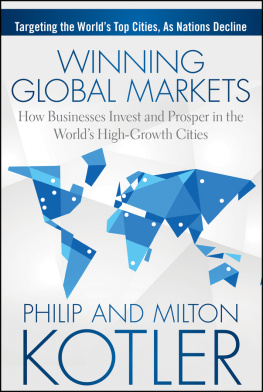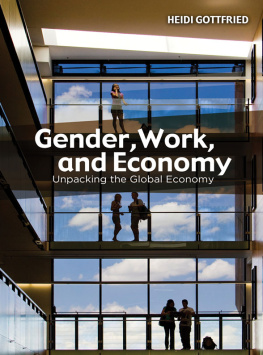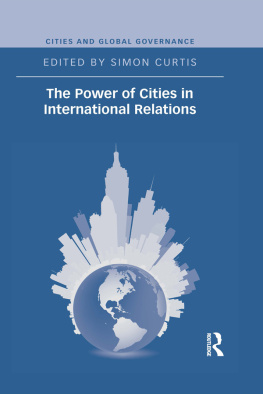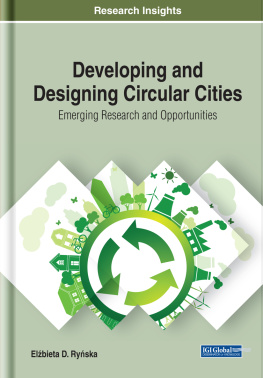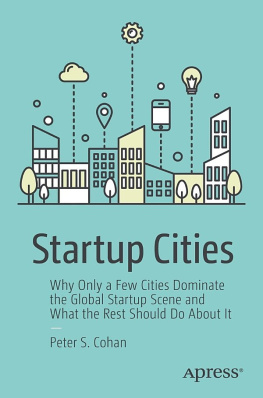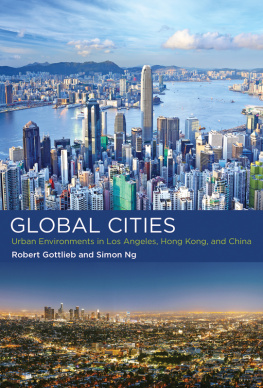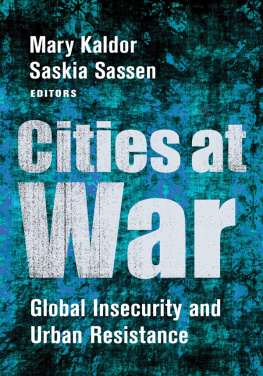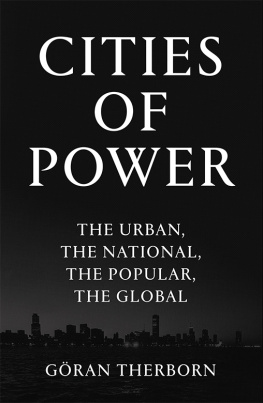Table of Contents
Emerging
Global
Cities
Emerging
Global
Cities
Origin, Structure,
and Significance
Alejandro Portes
and Ariel C. Armony
Columbia University Press
New York
Columbia University Press
Publishers Since 1893
New YorkChichester, West Sussex
cup.columbia.edu
Copyright 2023 Columbia University Press
All rights reserved
EISBN 978-0-231-55587-6
Library of Congress Cataloging-in-Publication Data
Names: Portes, Alejandro, 1944 author. | Armony, Ariel C., author.
Title: Emerging global cities : origin, structure, and significance / Alejandro Portes
and Ariel C. Armony.
Description: New York : Columbia University Press, 2022. | Includes bibliographical
references and index.
Identifiers: LCCN 2022012585 | ISBN 9780231205160 (hardback) |
ISBN 9780231205177 (trade paperback) | ISBN 9780231555876 (ebook)
Subjects: LCSH: Megacities. | Urbanization. | City planning.
Classification: LCC HT166 .P6383 2022 | DDC 307.1/216dc23/eng/20220315
LC record available at https://lccn.loc.gov/2022012585
A Columbia University Press E-book.
CUP would be pleased to hear about your reading experience with this e-book at .
Cover design: Elliott S. Cairns
Cover image: Xavier Cortada, Emerging Global Cities, 2021
Contents
Rana Tomaira
With the collaboration of Brandon P. Martinez
With the collaboration of Larry Liu
With the collaboration of Larry Liu
With the collaboration of Rosa Hassan De Ferrari and Anthony Ocepek
With the collaboration of Rosa Hassan De Ferrari and Anthony Ocepek
Larry Liu
A study of the scope that we set for ourselvesidentifying, analyzing, and comparing cities in the contemporary global systemcould not have come to fruition without a series of fortunate events and coincidences, and without the cooperation and faithful support of a number of people. Aside from our collaborating authors, listed in the title page and in individual chapters, Portes benefited from his affiliation with New York UniversityAbu Dhabi, where he taught fall courses over five years. There he met Rana Tomairaa scholar of Middle Eastern and urban affairswho, in addition to authoring the chapter on Dubai, she also furnished sage counsel and gave valuable inputs to our analysis of global cities. Also at NYU-Abu Dhabi, David Cook-Martin, then chair of the Social Studies Department, provided decisive support for the project and organized a symposium on our previous bookThe Global Edge: Miami in the Twenty-First Centuryin which several urban scholars, including Professor Tomaira, participated.
Armonys position as Vice Provost for global affairs at the University of Pittsburgh made possible a number of trips to different parts of the world, including Singapore and Dubai, as well as to other cities that were subsequently striving for a comparable position of global prominence. In 2015, Portes paid an extensive visit to Singapore at the invitation of Professor Min Zhou, then head of Sociology at Nanyang Technological University. This visit provided firsthand knowledge about the economic and social characteristics of the city and their surprising similarities with those that he had observed in Miami and Dubai.
The enriching discussion generated by the presentation of our book on Miami at the University of Pittsburgh in March 2019 played an important part in shaping our ideas for this project. The insights from many colleagues at Pittsburgh and informants in places such as Hong Kong were vital for gathering information and finetuning our understanding of the different cases included in this book. Armonys ongoing collaboration with colleagues at the University of So Paulos Programa de Ps-Graduao Integrao da Amrica Latina (PROLAM/USP)in particular, Professor Lucilene Curyand his interactions with colleagues at Newcastle University in the United Kingdom, and with businesspeople and government officials in Lagos, were important in shaping our perspectives and helped us produce a nuanced analysis that was sensitive to the often-conflicting perspectives on global cities.
As the study gradually took form, it received crucial support from several colleagues who followed the project from the start. In particular, we must acknowledge with gratitude the input of Professors Min Zhou and Philip Kasinitz. Zhou was not only the gracious host of Portes during his visit, but she also continued to provide advice based on her extensive knowledge of Singapore. She carefully reviewed the chapter dedicated to that city and evaluated the initial prospectus for the book, offering valuable insights and recommendations.
On his part, Philip Kasinitz played the star role at a symposium on our previous book on Miami, organized by the University of Miami Institute for Advanced Study of the Americas (UMIA) in April 2019. During his intervention, Kasinitz advanced several important observations and a key insight that helped guide our then-incipient work on this project in a new direction. He went on to suggest Columbia University Press as a suitable publisher for the book and subsequently contributed a strongly positive and also detailed critical evaluation of the initial prospectus.
During the past decade, Portes has been affiliated with the University of Miami, with dual appointments at its Law School and Department of Sociology. This affiliation provided an invaluable vantage point for observing the evolution of the city and the complex features of its economy and social structure. The president of the University of Miami, Julio Frenk, and Felicia Knaul, director of UMIA and Frenks spouse, provided a cordial and supportive environment for our work, with UMIA organizing several symposia to highlight several past publications, including the Global Edge. Portes acknowledges with gratitude this stance on the part of university leaders, including the university provost, Jeffrey Duerk, and the dean of the College of Arts and Sciences, Leonidas Bachas.
From 2010 to 2014, Armony held the Martha Weeks Professorship of Latin American Studies at the University of Miami, where he directed the Center for Latin American Studies and led the foundation of UMIA. These years afforded him the opportunity to observe firsthand the core attributes of Miami as an emerging global city and to engage with residents and local organizations. At the University of Pittsburgh, where he has directed the University Center for International Studies (UCIS) in addition to acting as vice provost, he benefited from many workshops, conferences, and symposia on cities organized by the area and thematic centers under UCIS, as well as from diverse collaborations with partners around the world. These collaborations helped him explore issues of economic development, race relations, migration, social justice, and climate change in comparative perspective, as cities are built and rebuilt.



